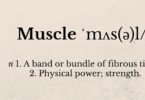So: if you aren’t familiar with the idea of a ‘technological singularity,’ it’s a term coined by mathematician Stanislaw Ulam for what happens when Skynet becomes self-aware and goes completely nuts. More specifically, it’s the idea that there will come a point where computers become more intelligent than humans, at which point it’s difficult to predict or understand what will happen. Most futurists think of it as a kind of technological event horizon where computers become increasingly powerful and there’s no turning back because we aren’t really in control any more. Fast-forward six months, and everyone’s hiding from the robots that can use meat as fuel.
How does this relate to working out? Two ways. Firstly, when we’re all fleeing from T-1000s you’re going to wish you’d done more sprints. Secondly, there’s such a thing as a workout singularity, the hitting of which will actually make doing those sprints easier.
Here’s the thing. If you don’t train, or haven’t been training for long, or have always trained the wrong way, there’s a fairly good chance that you think of training as a horrible chore. It’s something to be done so you don’t wheeze or jiggle when you climb up stairs, or – if you’re forward-thinking – so you don’t get osteoporosis when you’re older, but you don’t actually enjoy the process, let alone look forward to it.
Some people, though, cannot stop themselves from working out, and it isn’t because they’re fundamentally different from you – it’s because they’ve hit the singularity. Some do this when they’re children, others when they’re 30 or 40 or 72. I hit it in my mid-twenties and now I can’t walk past a pullup bar without at least doing a couple of reps or stand still on an escalator. The workout singularity is the point where things start to click – where you can shift appreciable weight or run quite fast or look okay with your shirt off, so you seek opportunities to do those things. Where movement becomes a natural, easy thing, and you’re in command of your own body and telling it what to do. Where you’re familiar with the endorphin high you get from training and you’re constantly full of testosterone from lifting things and (preferably) eating meat. It’s the point where you stop dreading the gym and start looking forward to it.
How do you hit the singularity? Easy.
Set goals
I’ve said this elsewhere, but I’m more in favour of setting goals like ‘I will lift X’ or ‘I will run Y in Z time’ than ‘I want a six-pack.’ Firstly, they make it less likely that a moment of doughnut-eating weakness will lead to an avalanche of self-blame and back-sliding, and secondly, they give every gym session you do a tangible purpose. Thirdly, if you can do (say) 20 strict pullups, you’ll have a six-pack anyway. Start with two or three: I’d suggest a bodyweight-on-the-bar squat, 10 pullups or a 25-minute 5k. What do you do when you hit them? Set more.
Have a plan
Get on a respected training plan and stick with it. Not only will this stop you second-guessing your self-constructed programme, it’ll also provide you with regular, noticeable improvements. I like Starting Strength and 5/3/1, but anything that promises measurable improvements over a given period – in terms of weight shifted, reps done or time taken, not how you look in the mirror – will do.
Ignore everyone else
If you’re doing both of the above, don’t worry about what everyone else in the gym is doing. You don’t know their training history, goals, or anything else, so there’s no point in competing with, or feeling intimidated by, them. Having the discipline to stick with whatever weights/exercises you’ve planned to do, especially in the face of a dozen guys doing cable flyes, will see you a long way towards your goals.
Just show up
If there’s a day you genuinely can’t face the gym, just go there and do something – have a sauna, have a shower, do two minutes on the rower, whatever. Not only will this get you used to the process of actually going to the gym, but when you’re there, chances are you’ll do more than you planned. A nice corollary to this is that many solid training plans only require you to do two or three moves a session, not the dozens most people attempt in the gym. Some days, I’ll go to the gym, warm up, do three heavy sets on the squat, and leave. Lovely.
Embrace the process
Stop reading Grazia or the Financial Times between sets or while you begrudgingly pedal your bike. The rest between sets is your time to catch your breath, mentally run through form pointers for your next set, or otherwise psyche yourself up. If you’re reading on the bike, you should probably be going faster. Training is supposed to be a release from all the other stupid shit you normally distract yourself with, and when you get really focused it becomes almost like meditation. Distracting yourself from it defeats half of the purpose.
I’m not going to lie to you: if you’ve never trained before, your first couple of sessions in the gym might be dispiriting, because it’ll be difficult to do anything and most people will be fitter than you. But push through: the faster you do all of the above, the sooner you’ll hit a point where you don’t want to miss a training session. That’s the singularity: where it’s difficult to predict or understand what’s going to happen…except that you’ll get more powerful than you previously thought possible.
HOMEWORK: If you haven’t got any training goals, set one. And don’t let anything distract you next time you’re in the gym.






Leave a Comment